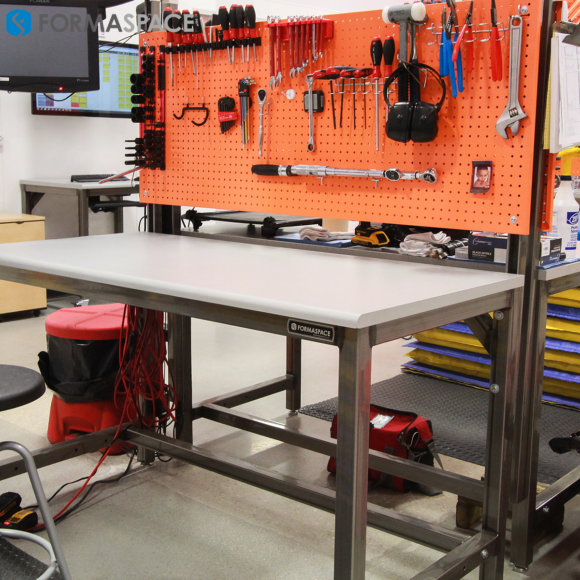How Management Theory Helped Define the Modern World
To get a complete picture of the future of management frameworks, we’re going to go back to the very beginning – to the start of the 20th Century when the first waves of the industrial revolution were still in full swing across the USA.

(1908) Fordism
It was in these days that Henry Ford launched the famous Ford Model T (1908), and by 1914, Ford factories were churning out thousands of cars every week. The philosophy of “Fordism” transformed car manufacturing from one of highly skilled craft labor fitting individual parts together to a new era of unskilled labor assembling “interchangeable” parts (built to exact tolerances) on a moving assembly line.
(1911) Scientific Management (AKA Taylorism)
In this era, Frederick Taylor attained fame as what we would call today the world’s first “management consultant.” Taylor’s seminal work, The Principles of Scientific Management, pioneered the use of time-management studies to increase worker productivity and efficiency in the factory, primarily in the steel industry.

(1910s) Gantt Chart
Henry Gannt helped bring order to complex industrial-scale projects, thanks to his eponymous charting system that helps visualize complex schedule dependencies between individual tasks in an easy-to-grasp way. Gannt charts were adopted by US military planners in World War I and remain a mainstay management tool to this day; one remains easily recognizable to users of Microsoft Project and other software planning tools.
(1930s) Shewhart Cycle, later Plan-Do-check-Act (PDCA)
In the interwar period, Walter A. Shewhart, working at Bell Telephone, wrote Economic Control of Quality of Manufactured Product (1931), followed by Statistical Method from the Viewpoint of Quality Control (1939). Together, these works form the basis of today’s modern statistical quality control systems. Physicist and co-collaborator W. Edward Deming developed these ideas further for use in increasing product quality in industrial manufacturing, promoting them as the “Shewhart Cycle.” After WWII, this system became better known by the acronym PDCA (Plan-Do-Check-Act) and was widely embraced, as we’ll see shortly, by Japanese industrialists.
(1940s and 1957) CPM Critical Path Method
Another management system that’s still widely used today is CPM, short for the Critical Path Method. Building on the management philosophies of DuPont in the 1930s, CPM came into its own as an organizational tool when it was used to manage the sprawling yet top-secret Manhattan Project to build the world’s first atomic weapon during World War II. The US military formalized the definition of CPM in 1957 as part of the Polaris submarine-based nuclear missile program. The CPM approach is so familiar to us today that we often use CPM lingo in everyday conversations, for example, saying “we need to ‘fast track’ a project” – without realizing it’s an expression that comes directly from CPM terminology.
(1958) PERT (Project Evaluation Review Technique)
Concurrent with the formalization of CPM in 1957, the US Navy introduced PERT (Project Evaluation Review Technique) in 1958. It’s a visually-oriented project planning tool that’s highly complementary to CMP. PERT makes it easier for project planners to visualize critical path tasks and calculate the impact that changes (such as adding more resources or incurring unexpected delays) will have on scheduled delivery estimates. PERT charts can be presented in a form that at first glance resembles a Gannt chart, although it’s become more common for the activity descriptions to be moved onto each action node in the chart (an approach known as the activity-on-node (AON) method).
The American Origin of Japan’s World-Leading Management Frameworks
In the aftermath of World War II, Japan fell under US Military administration, and Japanese industrialists looking to rebuild their factory turned to US experts for inspiration.
Perhaps no other American during this period had a greater impact on Japanese industrial production than W. Edward Deming.
Deming, who, as we mentioned earlier, had promoted the statistical quality control methods developed by Walter A. Shewhart before the war, was hired by US officials to oversee the 1947 Japanese census where he pioneered the use of sampling techniques still used by the US Department of the Census and the Bureau of Labor Statistics.
Deming later trained hundreds of Japanese engineers, managers, and scholars in statistical process control (SPC) – many of whom were employed by what would later become world-famous brand name companies, such as SONY. In the process, Deming became a celebrated management consultant “guru,” and in 1951, he was honored by the Japanese Union of Scientists and Engineers (JUSE) for his contributions to Japanese manufacturing quality with the establishment of the annual Deming Prize.
(1948 – 1975) TPS: Toyota Production System (today known as The Toyota Way)
Much of the thinking behind today’s management frameworks can be traced back to the companies founded by Sakichi Toyoda, starting with the Toyoda Automatic Loom Works that was established in 1926. (Today, it’s known as Toyota Industries Co., Ltd.)
Ford, Taylor, Gannt, Shewhart, and Deming helped lay the foundation for today’s modern management frameworks. But Sakichi Toyoda, who founded Toyoda Automatic Loom Works in 1926, and his eldest son Kiichiro Toyoda, who founded its Toyota Motor Co., Ltd. subsidiary in 1937 – as well as Toyota engineers Taiichi Ohno and Eiji Toyoda – were responsible for inventing some of the most significant, influential manufacturing principles of the 20th Century.
Consider the idea of stopping the production line when a problem arose – this first appeared at Toyoda Automatic Loom Works. So too did the use of the “5 Why’s” efficiency mnemonics – Seiri (sort), Seiton (organize), Seiso (clean), Seiketsu (standardize), and Shitsuke (sustain) – used to this day to help organize factory production for maximum productivity and highest possible quality output.
Spearheaded by the company’s brilliant engineers Taiichi Ohno and Eiji Toyoda, the Toyota companies introduced one revolutionary idea after another in the years 1948 through 1975, including:
- JIT Just-in-Time manufacturing
- Kaizen (continuous improvement)
- Kanban (visible production cards)
- Muda (reduction of waste)
Collectively, these concepts became known as TPS, or the Toyota Production System (Today it’s better known as the Toyota Way), which paved the way for management systems of the future, such as TQM, SixSigma, Lean Manufacturing, and more.
America Rediscovers its Own Quality Management Skills — By Studying Japanese Manufacturing Methods

What were American manufacturers up to during the post-war period?
The 1950s and 1960s was a period of flashy conspicuous consumption, with television commercials promoting the new models of cars, appliances, or home entertainment systems – as part of a strategy that emphasized planned obsolescence over quality.
(1960s – 1970s) ZD (Zero Defects)
With the quality of American products languishing in this era, the quality control department manager Philip B. Crosby at the aerospace firm Martin Company (later Martin Marietta and today part of Lockheed) set about to revive quality production across the supply chain.
Crosby created the ZD program (short for Zero Defects), which encouraged each employee in an organization to do their part to reduce errors and defects. The ZD program was adopted by some of the large companies of the day, including ITT Corporation, Montgomery Ward, and General Electric (GE), as well as the US Army. However, interest in ZD had waned by the late 1970s, as budget cutbacks put quality control programs on the chopping block.
This was unfortunate timing as American consumers were beginning to notice the growing quality gap between American products and overseas imports (especially those from Japan).
(1985) TQM (Total quality management)
By the 1980s, American consumers began purchasing Toyota Corollas and Honda Accords in droves. Higher gas mileage was one motivation, but many former American-made car owners swore off purchasing another Detroit product after one disastrous car after another came to market, including the infamous Chevrolet Vega and Citation models.
You might be wondering, after this long period of decline, when would the American manufacturing interests rediscover the need for quality?
The start of the American quality renaissance dates to 1985 with the introduction of “Total Quality Management” (TQM), an initiative of the US Navy, which was soon adopted by many of the armed services. It was based on the principles promoted by W. Edwards Deming, the same American quality “guru” that had taught quality management principles to Japanese industrialist in the late 1940s.
(1986) SixSigma
The introduction of TQM in 1985 marked the beginning of a roughly ten-year period that saw the introduction of many of the management frameworks in use today, starting with SixSigma, an initiative heavily promoted by General Electric.
Like ZD before it, SixSigma focuses on employee involvement, but rather than asking every employee to take equal personal responsibility for quality, SixSigma creates dedicated roles for designated employees to be the point person for quality in their department while also providing a direct line of communication to upper management. Each designated SixSigma employee is trained on quality principles, allowing them to earn increasing levels of certifications denoted by martial arts terminology, e.g. green belt, black belt, etc.
As GE grew to be one of the largest, most admired corporations in the business world, GE’s wunderkind CEO Jack Welch promoted SixSigma as one of the key reasons for GE’s success – influencing many other executives to adopt SixSigma programs in their own organizations, as well as fueling many extensive third-party SixSigma consulting, training and certification programs.
(1987) ISO 9000, a family of Quality Management Systems (QMS)
During this period, the ISO standards organization also jumped into the fray, introducing their family of Quality Management System (QMS) standards under the ISO 9000 umbrella. The idea behind this was for companies to self-certify their operations (often with the assistance of eager ISO 9000 consultants) as being in compliance with international standards for quality. ISO 9000 certifications became popular as an increasing number of government and business supply chain contracts began to mandate that all involved contractors and suppliers be ISO 9000 certified.
By the early 1990s, the combined popularity of SixSigma and ISO 9000 were sapping interest in TQM programs promoted by the US government and armed forces, and by 1995, the Clinton administration opted to close down the government’s Federal Quality Institute.
(1988, 1996) Lean Manufacturing and The Machine That Changed the World
In the late 1980s, MIT began a $5 million study of the future of the automobile industry, and in doing so, uncovered the extensive quality control and manufacturing efficiency innovations at Toyota in Japan. A best-selling book, “The Machine That Changed the World” (published in 1991), introduced many of the concepts of the Toyota Production System (TPS) to the world.
American manufacturers were hungry to unlock the secrets of the TPS system and apply it to solve their own production and quality issues. The result, dubbed “Lean” manufacturing by John Krafcik in 1988, is the basis for one of the most influential management frameworks used in industrial manufacturing today. These concepts were further refined by the authors of The Machine That Changed with World in their follow-on work, Lean Thinking, which appeared in 1996.
(Mid-1990s) Enterprise Resource Planning (ERP)
Consultants at the Gartner Group are credited with creating the umbrella term Enterprise Resource Planning (ERP) in the 1990s to describe the advantages of combining once separate functions, including accounting, product planning, material/manufacturing resource planning and procurement, and sales/distribution, into a fully integrated system that would allow executives greater visibility and insight into the company’s performance in financial results, productivity, quality, and customer satisfaction.
Software developers jumped on this and began to offer varying degrees of integrated ERP platforms, which later added additional corporate functions such as HR, corporate governance, and customer relationship management (CRM) tools.
As a result, we tend to think of ERP today as a software platform, rather than a management framework, yet it continues to serve as one of the main organizational frameworks – one that’s becoming more popular than ever as even smaller companies (including Formaspace) adopt popular cloud-based ERP systems, such as Oracle’s popular NetSuite.
The Battle for Software Development: Traditional Heavyweight Management Frameworks versus the Upstart Lightweight Models
The rise of ERP software platforms is a good example of how important software development has become to companies selling products and services.
But managing software projects can be quite different from producing physical widgets in a factory, and a debate has emerged over what is the ideal approach to software development, one that pits so-called traditional “heavyweight” management systems against newer, upstart “lightweight” approaches.
We’ll look at the “heavyweight” frameworks first.
(1985) Waterfall aka SDLC (Software Development Life Cycle)
The Department of Defense formalized its DOD-STD-2167A standard for software development in 1985. This approach, dubbed SDLC for Software Development Life Cycle, is highly structured, featuring six sequential development phases, and it incorporates the timeline planning approaches first used in CPM (critical path method) and other top-down planning tools. SDLC is also commonly referred to as the Waterfall approach, with one task flowing down to the next task.
(1986) Spiral (Software Development)
Another approach to software development introduced in the mid-1980s is the Spiral model, which takes into account that software development often encounters unexpected risks, such as delays, setbacks, or mid-stream changes to the project requirements.
(1989) PRINCE2 (Projects IN Controlled Environments)
Roughly speaking, the European equivalent to SDLC is PRINCE2 (short for Projects IN Controlled Environments) which was spearheaded by the UK government as a standard for IT project planning. This framework is primarily used to manage software projects in Western Europe and Australia.
(1996) PMI’s PMBOK (Project Management Body of Knowledge)
Many of our readers will be familiar with the Project Management Institute (PMI), which oversees the highly popular PMP (Project Management Professional) professional designation for project planners.
In 1996, PMI also introduced its management framework for software development, the PMBOK, short for Project Management Body of Knowledge. It’s designed to be an overview of best practices for managing software projects, using tools such as critical path management (CPM) and work breakdown structure (WBS).
New “Lightweight” Frameworks Address the Need to Create Disruption in Development Software-Based Products and Services
Despite the proliferation and adoption of these management frameworks software projects, many programming professionals found these top-down, “heavyweight” approaches to be too slow and cumbersome to facilitate the timely delivery of successful software projects.
(1986) Scrum
In 1986, Hirotaka Takeuchi and Ikujiro Nonaka created the concept of Scrum, which was intended to be the diametric opposite of heavyweight, top-down management frameworks. In the Scrum approach, a small group of programmers work together tightly as a team, meeting each day to stand up (literally) for a short meeting to announce their incremental programming goals for that day. Projects are also broken up into small timeframes, called Sprints, which typically run for two weeks at a time. (You may be familiar with the concept of software development Sprints, which are a common feature of summer coding camps or open-software meetups.)
(1996) Rational Unified Process (RUP) and Unified Modeling Language (UML)
Just as the industrial revolution needed new visualization modeling tools to organize factory production, so too did software development. The Swedish computer scientist Ivar Jacobson created two of the most influential tools in this regard, the Unified Modeling Language (UML) and the Objectory Process. The latter was acquired by Rational Software (now part of IBM) and was renamed Rational Unified Process (RUP). These tools are used by software architects to clearly define software product requirements in much the same way as mathematicians rely on mathematical symbols to write equations.
(1999) eXtreme Programming (XP)
In 1999, the eXtreme Programming approach was introduced; it seeks to address the need to be flexible in light of everchanging customer requirements, which often derail projects managed using heavyweight, top-down management frameworks. XP places emphasis on extensive code reviews and continuous unit testing of software code to ensure quality.
(2011) Agile and Scaled Agile Framework (SAFe)
Now we come to what has become the best known of the “lightweight” software project management frameworks, Agile.
Agile’s origins actually date back to 2001 when a group of like-minded developers issued a paper called a Manifesto for Agile Software Development.
The Agile approach was formalized in 2011 by the Agile Alliance in their Guide to Agile Practices (now the Agile Glossary). Agile incorporates many of the features of RUP, which are now part of the Scaled Agile Framework (SAFe).
As the name implies, the Agile approach recognizes that software development requires moving quickly to solve problems (and beat competitors to market). It also acknowledges that software requirements can change dramatically over the course of a project, and rather than complain, software developers should anticipate this and write their code in a way that facilitates reuse and revision for new requirements.
Agile philosophies caught the attention of Silicon Valley entrepreneurs, who saw a kindred spirit in the Agile approach.
“Move fast and break things” is a well-known mantra among Silicon Valley entrepreneurs, who believe it’s most important to wield first-mover advantage by entering new (e.g. blue ocean) markets as quickly as possible, even if the product is not perfect and only has a bare-bones feature set (known as the MVP, or minimally viable product).
Agile is also attractive as it supports the concept of “The Pivot,” whereby a startup company facing rejection in the marketplace quickly revamps their offering to try again with a new MVP (minimum viable product).
Over Time Some Once Popular Frameworks Fall Out of Favor, Superseded by Newer Ways of Doing Things
By highlighting the history of management frameworks over the past 100 years, you can easily see that as new innovations emerge, some of the earlier frameworks either fall out of favor entirely or their best features are repackaged into newer, shinier objects.
For example, we’ve seen that the work of W. Edward Deming was adopted by Japanese manufacturing in the early post-war period, but he remained relatively unknown in the US until the late 1980s.
The ZD (Zero Defects) approach fell out of favor in the late 1970s.
And by the mid-1990s, TQM was superseded by a slew of competitors, including SixSigma, ISO 9000, ERP systems, and Lean Manufacturing.
Some operations analysts believe that the same may be happening to SixSigma today. Its once proud champion, GE, has fallen from the highest levels of corporate performance (with many of its divisions sold off), and it no longer actively serves as the major SixSigma promoter. Over time, more powerful and accessible cloud-based ERP software platforms have become capable of performing many of the quality and cost control functions performed by SixSigma blackbelt and greenbelts. We don’t believe SixSigma will disappear (it remains useful where precision is critical, as in aircraft engine production), but it will probably live on in new updated frameworks, such as Lean SixSigma, a framework introduced in 2001 that combines the best of Lean Manufacturing and SixSigma approaches.
On the other hand, the Agile software development framework has, for the time being, become the darling of software project management, with many schools offering Agile classes and armies of consultants offering Agile certifications. This has certainly pushed frameworks such as Waterfall/SDLC into the background, but the software industry is very dynamic, and we’d expect new frameworks based on AI and machine learning to emerge, a topic we’ll discuss next.
What’s Next? Sustainable Business Model Frameworks and Leading-Edge Data Analysis Tools for AI/Machine Learning
What about management frameworks of the future?
As we’ve seen over the decades, new management frameworks come into vogue that reflect the prevailing operational goals of the organizations that implement them.
With sustainability and green business practices becoming more important for governments and businesses, we predict that existing frameworks will try to take on these issues, as well as the introduction of new frameworks in the market.
(2013) PRiSM (Projects Integrating Sustainable Methods)
You are most likely familiar with green building standards, such as the widely known LEED building certifications as well as emerging standards for so-called Net Zero buildings that (on balance) don’t draw energy from the power grid.
One management framework that has emerged in the construction and real estate development field is PRiSM, short for Projects Integrating Sustainable Methods.
We predict we will see greater adoption of new management framework features that will help organizations reduce their carbon footprint or increase their overall sustainability, in the same way that earlier generations of frameworks zeroed in on improving product quality.
(2014) Big Data Analysis Frameworks: Apache Hadoop & Spark, and Google Tensorflow
The story of artificial intelligence and machine learning is still being written.
Yet many leading-edge organizations are starting to see the benefits as discoveries from artificial intelligence research labs are being made available to the public in the form of open source libraries, such as Apache Hadoop, Apache Spark, and Google’s Tensorflow.
These open software stacks (which in their commercial versions power voice-activated interfaces such as Siri or Alexa) can help companies perform machine-learning-powered data mining analysis on huge data sets.
Right now, we’re seeing incremental improvements to existing technologies, such as e-commerce storefronts. For example, these AI-powered tools allow customers to interact with chatbots that can retrieve individual customer preferences and make specific recommendations, including presenting useful images and captions.
But the most interesting innovations are yet to come – but we don’t know what they are yet.
As these tools become more mainstream, it’s also likely that an existing management framework will step up to embrace these AI-based tools, or a new management framework will emerge to address the unique requirements of AI-based software development in the corporate or government arena.
Which Management Framework is Right for You?
The answer is, of course, “it depends.”
Many project managers now combine features from different frameworks to create a hybrid system, one that solves the unique set of issues that they need to address.
For example, in the Agile arena alone, there any many more variants of Agile than we had space to mention, including the Scrumban and Kanban software development frameworks.
The most important thing is to find your own “secret sauce,” e.g. an effective management framework approach that works for you, for your business, and your customers.
Formaspace is Your Partner for Efficient Operations
If you can imagine it, we can build it, here at our factory headquarters in Austin, Texas.
We are your source for American-made furniture products, custom-built to meet your exact specifications.
Contact your Formaspace Design Consultant today and find out why leading companies, such as Apple, Capital One, Dell, Google, Oculus, SpaceX, and Twitter, choose Formaspace furniture solutions.















